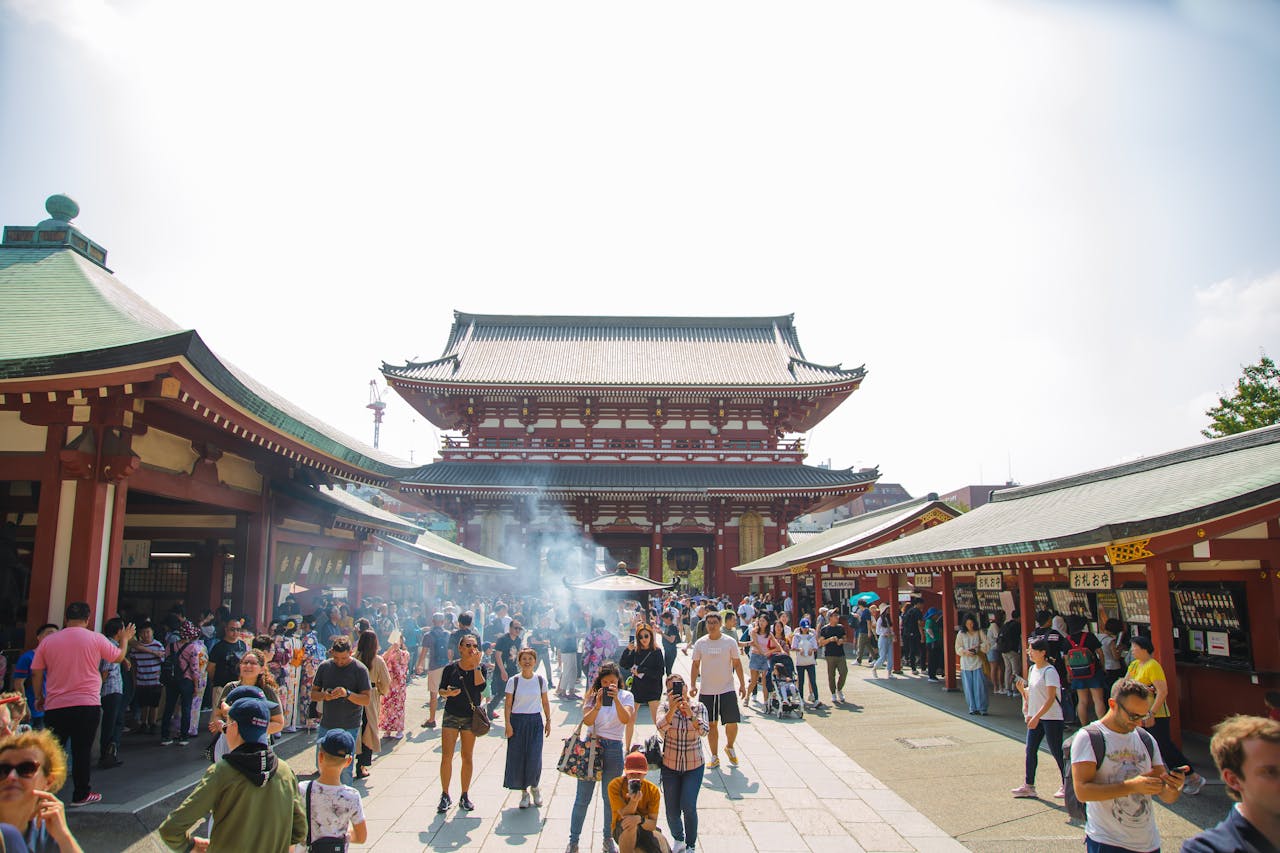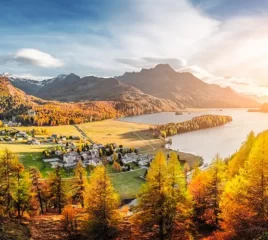Note that iPhone devices from Mainland China aren’t eSIM compatible. Also iPhone devices from Hong Kong and Macao aren’t compatible (except for iPhone 13 Mini, iPhone 12 Mini, iPhone SE 2020 and iPhone XS)
Japan’s natural beauty and deep-rooted traditions make it a fantastic destination for sustainable travel. From eco-friendly accommodations to efficient public transport and lush green spaces, there are plenty of ways to explore Japan while minimizing your environmental impact. Whether you’re strolling through bamboo forests, supporting local businesses, or choosing a digital eSIM Japan over plastic SIM cards, small choices can make a big difference in responsible tourism.
Eco-Friendly Accommodations in Japan
Choosing Green-Certified Hotels and Ryokans
When looking for a place to stay in Japan, choosing accommodations that prioritize sustainability can make a big difference. Opt for properties with certifications like Green Key or those that use renewable energy sources. Many of these hotels also offer locally sourced, organic meals, which is a great way to support nearby farmers while enjoying fresh and seasonal dishes. Traditional ryokans, or Japanese inns, are another excellent option. Staying in small-scale ryokans not only reduces your environmental footprint but also helps sustain local economies.
Exploring Eco-Lodges in Rural Areas
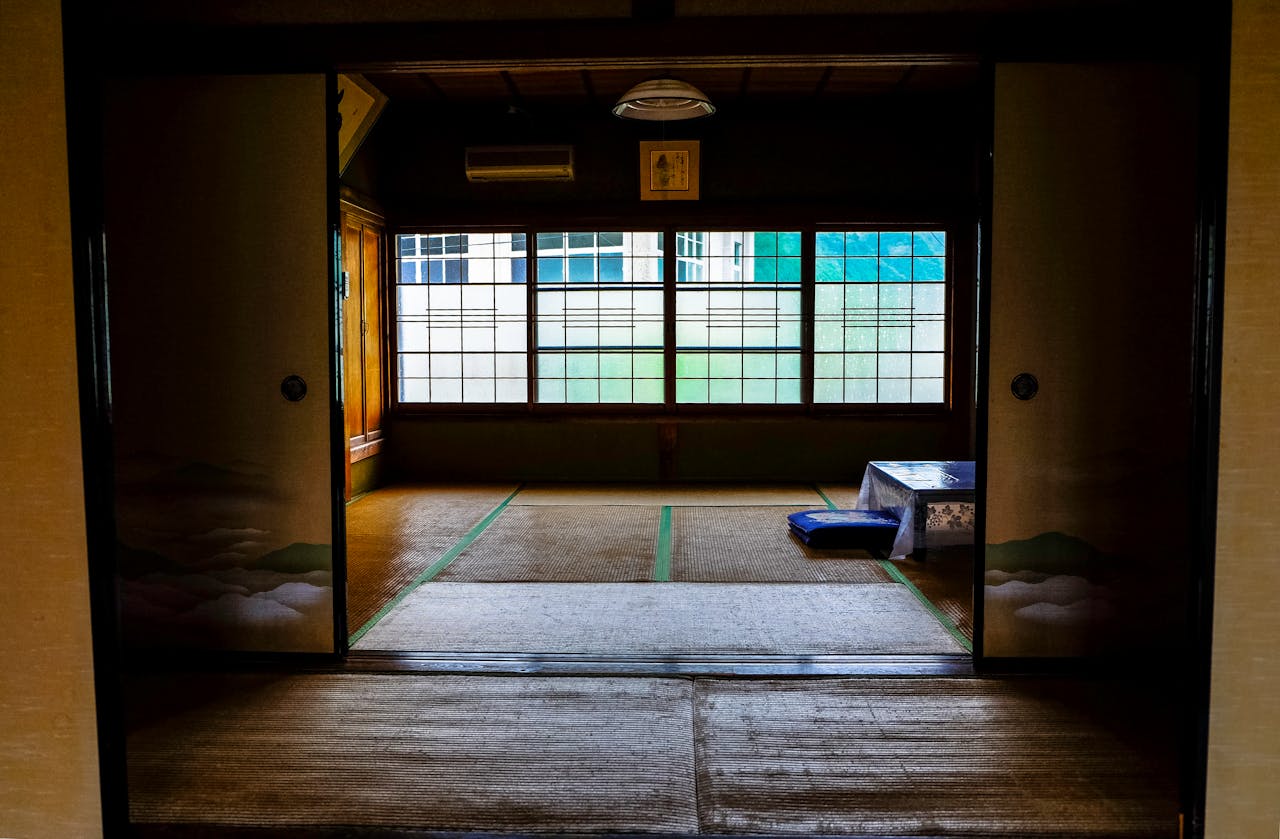
For a more immersive experience, consider eco-lodges located in scenic areas like the Japanese Alps or near Lake Biwa. These lodges are often built with sustainability in mind, using natural materials and operating with minimal environmental impact. They also provide opportunities to connect with nature, whether it’s through guided hikes or quiet moments overlooking serene landscapes. Eco-lodges offer a slower pace of travel, letting you truly appreciate Japan’s natural beauty.
Participating in Community-Led Activities
If you want your stay to go beyond just a comfortable bed, look for accommodations that offer community-driven activities. For instance, you might join a rice planting workshop, learn traditional crafts, or even help with local conservation projects. These experiences not only enrich your trip but also foster a deeper connection to the places you visit. Plus, they’re a great way to meet locals and learn about their way of life.
Staying in eco-friendly accommodations isn’t just about reducing your footprint—it’s about embracing a more thoughtful way of traveling. By choosing sustainable options, you’re not just a visitor; you’re part of the solution.
Sustainable Transportation Options
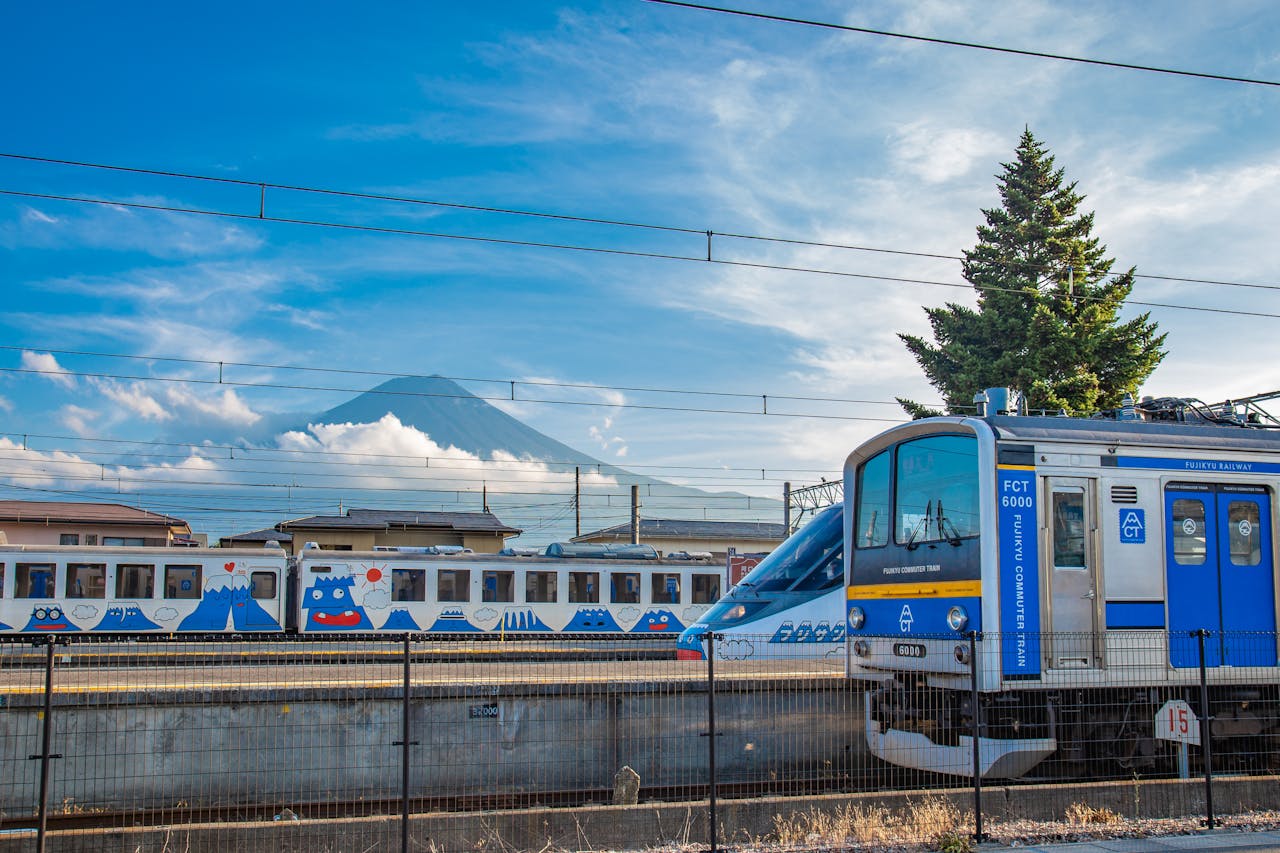
Using Japan’s Extensive Rail Network
Japan’s rail system isn’t just famous for its speed and efficiency—it’s also one of the most sustainable ways to travel. The Shinkansen, or bullet trains, run on electricity and are designed to minimize environmental impact. For slower-paced journeys, regional trains offer a chance to soak in rural landscapes. Train travel in Japan is both eco-conscious and incredibly convenient, making it a top choice for green travelers.
Cycling Through Scenic Countryside Routes
If you’re up for some exercise, renting a bike is a fantastic way to explore Japan. Many cities, like Kyoto and Nara, have bike-friendly paths, and rural areas often feature stunning cycling routes. It’s a low-impact way to immerse yourself in nature while reducing your carbon footprint. Plus, cycling lets you discover hidden spots you’d miss by car or train.
Opting for Electric or Hybrid Car Rentals
For those venturing into areas where public transportation is sparse, consider renting an electric or hybrid vehicle. Japan has an expanding network of charging stations, making it easier than ever to choose a low-emission option. This way, you can explore remote destinations while staying eco-friendly.
Sustainable travel in Japan isn’t just about getting from point A to B—it’s about making choices that respect the environment and enhance your experience.
Engaging in Responsible Tourism Practices
Supporting Local Artisans and Businesses
When you’re exploring Japan, take time to shop from local artisans and small businesses. Whether you’re buying handmade ceramics, traditional textiles, or delicious regional snacks, you’re directly supporting the local economy. Look for markets or small family-run shops rather than large chain stores. This not only makes your trip more meaningful but also helps sustain local craftsmanship.
Participating in Sustainable Cultural Workshops
Dive into Japan’s rich traditions by joining cultural workshops that prioritize sustainability. For example, you could learn indigo dyeing using natural materials, or try your hand at making pottery with locally sourced clay. These experiences give you a closer look at Japan’s heritage while promoting eco-friendly practices. Plus, they make for some unforgettable memories and unique souvenirs.
Respecting Local Customs and Traditions
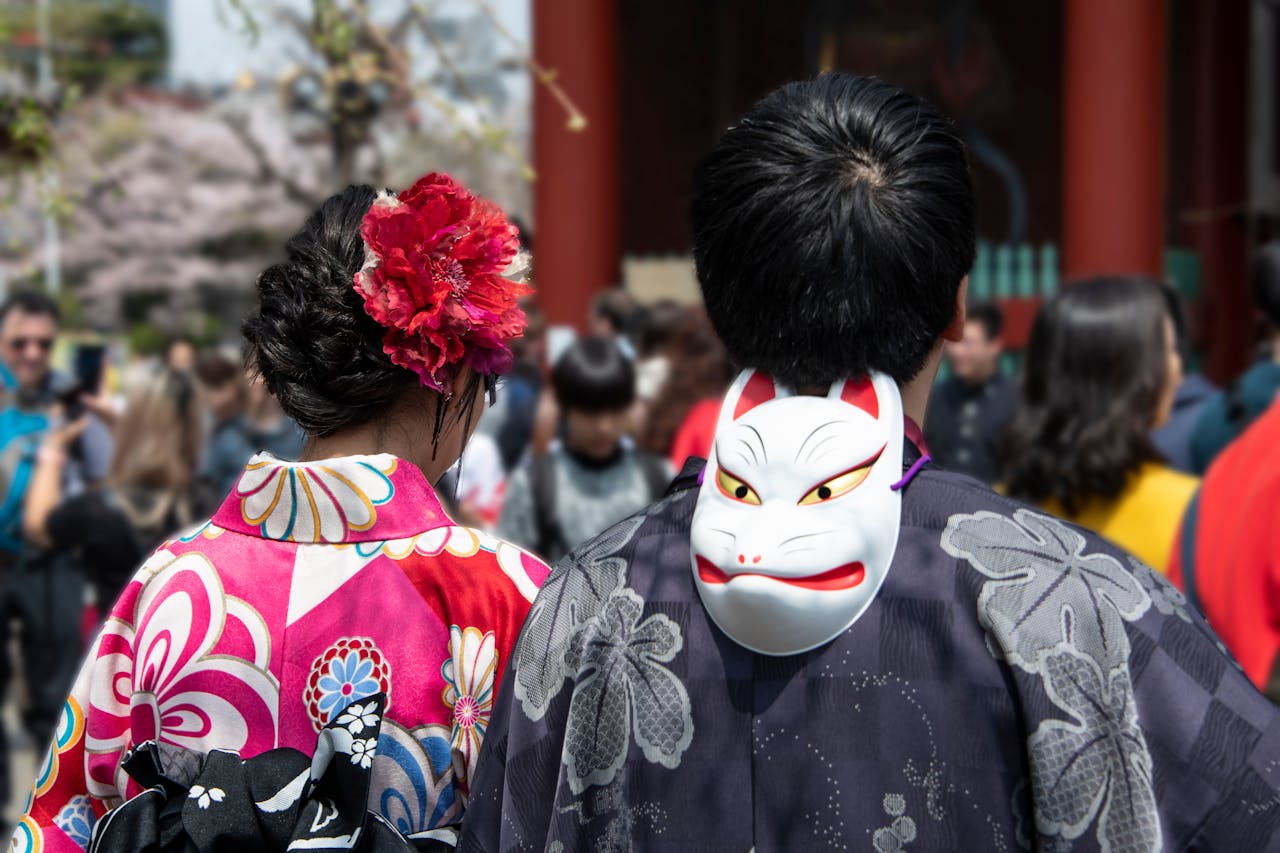
Respect is a cornerstone of Japanese culture, and tourists are expected to follow suit. Simple gestures, like removing your shoes before entering a home or temple, go a long way. Learn a few basic phrases like “Arigatou” (thank you) or “Sumimasen” (excuse me) to show your appreciation. Observing local guidelines, especially in natural areas or sacred sites, ensures that you leave a positive impact. Remember, responsible tourism isn’t just about preserving the environment—it’s also about honoring the people and culture of the places you visit.
Traveling responsibly in Japan isn’t just good for the planet; it enriches your experience by connecting you with the heart and soul of the country.
Exploring Japan’s Green Destinations
Visiting National Parks and Nature Reserves
Japan’s national parks and nature reserves are a treasure trove of biodiversity. From the volcanic landscapes of Aso-Kuju National Park to the serene forests of Shirakami-Sanchi, these areas offer a glimpse into the country’s natural heritage. When visiting, stick to marked trails to minimize your impact on fragile ecosystems. Consider hiring local guides who can share insights into the unique flora and fauna while ensuring your visit supports the local economy.
Discovering Hidden Gems Beyond the Golden Route
While spots like Kyoto and Tokyo are iconic, there’s so much more to explore. Head to Shikoku for its tranquil temples or Tottori for its stunning sand dunes. Smaller towns like Kanazawa offer a quieter cherry blossom experience compared to crowded cities. Visiting these lesser-known destinations not only provides a more intimate travel experience but also helps reduce the strain on over-touristed areas.
Enjoying Eco-Tourism in Okinawa and Hokkaido

Okinawa’s coral reefs and Hokkaido’s rugged wilderness are perfect for eco-tourism. Participate in activities like snorkeling in protected marine parks or hiking in untouched forests. Support initiatives that focus on conservation, like reef restoration projects or wildlife protection programs. These activities let you enjoy nature while contributing to its preservation.
“Exploring Japan’s green destinations isn’t just about enjoying the scenery. It’s about traveling in a way that respects and sustains the beauty for future generations.”
Go Green While Ditching Physical SIM Card in Japan!
Choose a zero-water eSIM to stay online in Japan with instant activation.
Minimizing Waste While Traveling
Carrying Reusable Water Bottles and Utensils
One of the easiest ways to cut down on waste is by packing reusable items. Carrying a reusable water bottle not only reduces the need for single-use plastic bottles but also keeps you hydrated on the go. Japan has plenty of public water fountains and refill stations, so this is a no-brainer. Toss in a set of reusable utensils and maybe a metal or bamboo straw, and you’re set for any meal or drink. Some restaurants and stores even appreciate when customers bring their own containers, though it’s polite to ask first.
Avoiding Single-Use Plastics
Single-use plastics are everywhere, but you can avoid them with a bit of planning. Bring a reusable shopping bag or a furoshiki cloth for wrapping purchases. These are lightweight, easy to carry, and fit perfectly with Japan’s cultural aesthetic. You’ll find that many stores welcome this effort, and it’ll save you from accumulating unnecessary waste. Plus, it’s a great way to avoid the hassle of hunting for a trash bin, which can be surprisingly rare in Japan.
Shopping at Packaging-Free Stores
For a more sustainable shopping experience, check out packaging-free stores or markets. These spots let you buy only what you need, cutting down on waste and excess. Bring your own containers or bags to fill up on fresh produce, grains, or even snacks. Not only is this eco-friendly, but it’s also a fun way to explore local ingredients. If you’re a foodie, this is a fantastic opportunity to discover regional flavors while staying green. For a deeper dive into Japan’s culinary treasures, don’t miss out on ten must-try foods that highlight the country’s diverse cuisine.
Small changes like carrying your own bottle or shopping bag might seem minor, but they add up. When thousands of travelers adopt these habits, the collective impact can be huge.
Seasonal Travel Tips for Sustainability
Traveling During Off-Peak Seasons

One of the simplest ways to travel more sustainably in Japan is to plan your trip during off-peak months. Avoiding the busiest travel seasons—like cherry blossom season in April or the New Year holidays—not only reduces the strain on popular destinations but also offers a more relaxed experience. For instance, visiting Kyoto in late winter or early autumn allows you to enjoy the city’s beauty without the massive crowds. Plus, off-peak travel often means cheaper accommodations and fewer crowds, making it a win-win for both you and the environment.
Experiencing Local Festivals Responsibly
Japan’s festivals are vibrant and culturally rich, but they can also draw huge crowds. If you’re planning to attend an event like the Gion Matsuri in Kyoto or the Nebuta Festival in Aomori, consider using public transportation to reduce your carbon footprint. Be mindful of waste disposal at festival sites—carry a small reusable bag for your trash, as bins can be scarce. Participating respectfully in these celebrations helps preserve their cultural significance while minimizing environmental impact.
Planning Around Seasonal Natural Events
Japan’s natural landscapes transform dramatically with the seasons, offering unique opportunities for eco-friendly travel. Spring is ideal for visiting lesser-known cherry blossom spots like Kanazawa or Hirosaki, where crowds are thinner. In summer, explore the lush greenery of the Japanese Alps or Hokkaido’s flower fields. Autumn is perfect for hiking in vibrant foliage around Nikko or the Kumano Kodo pilgrimage routes. And in winter, eco-conscious travelers can enjoy snowshoeing in quieter regions like Nagano instead of overcrowded ski resorts. Planning your activities based on seasonal highlights ensures a deeper connection to nature while supporting local economies.
Get Global Coverage Even During Seasonal Events
Experience hassle-free connectivity in Japan wherever you go.
Seasonal travel isn’t just about timing—it’s about making choices that align with the rhythms of nature and the communities you visit. A little planning goes a long way in creating a trip that’s memorable and sustainable.
Eco-Friendly Activities for Travelers
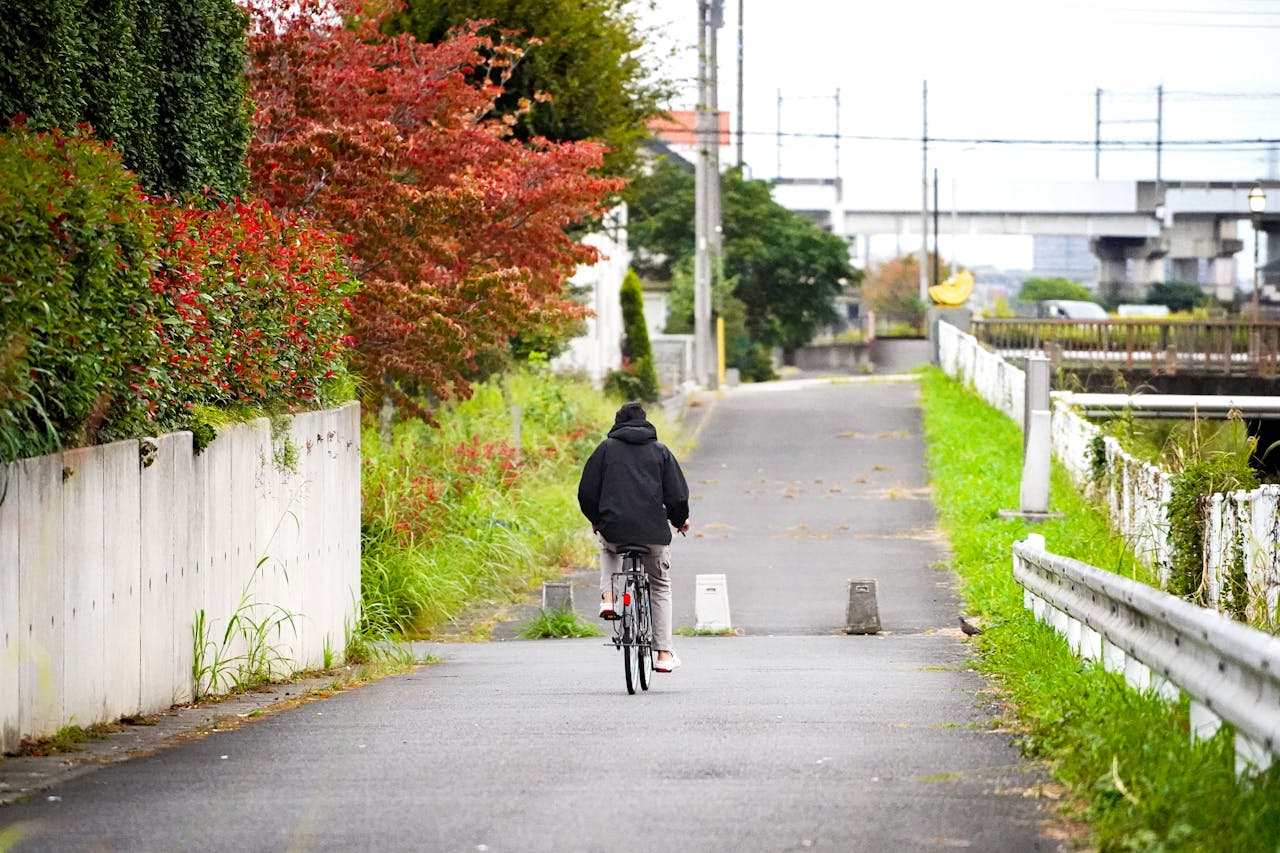
Hiking and Cycling in Nature
If you love the outdoors, Japan’s natural landscapes are perfect for eco-conscious activities. Hiking trails like the Nakasendo Trail or Mount Takao offer breathtaking views and a chance to connect with nature. For cyclists, scenic routes in places like Shimanami Kaido provide a peaceful way to explore the countryside. Remember to stick to marked trails to avoid disturbing local ecosystems.
Participating in Traditional Tea Ceremonies
Engage in a traditional tea ceremony, a practice deeply rooted in Japanese culture. Many tea houses now focus on sustainability by sourcing organic tea leaves and using low-impact methods. It’s a calming way to learn about local traditions while supporting eco-friendly initiatives.
Joining Guided Heritage Walks
Discover Japan’s rich history by joining guided heritage walks in cities like Kyoto or Kanazawa. These tours often highlight sustainable practices and encourage respect for historical sites. Opt for small group tours to reduce your environmental impact and ensure a more intimate experience.
Traveling responsibly doesn’t mean missing out on fun. It means making choices that protect the beauty of the places you visit for future generations.
Traveling can be a great way to explore new places, but it’s important to do it in a way that helps the planet. You can make a difference by choosing eco-friendly activities like hiking, biking, or visiting local markets or even choosing an eSIM for Japan travel instead of a physical SIM card. These options not only reduce your carbon footprint but also support local communities. Want to learn more about how to travel sustainably? Check out our website for tips and resources!
Wrapping It Up: Sustainable Travel in Japan
Traveling sustainably in Japan isn’t just about reducing your impact—it’s about experiencing the country in a more meaningful way. From staying in eco-friendly accommodations to exploring lesser-known destinations, every small choice adds up. By being mindful of your actions, you’re not only protecting the environment but also supporting local communities and traditions. So, as you plan your trip, remember that sustainable travel is a journey in itself—one that leaves both you and the places you visit better off. Happy travels!
Seamless Mobile Data Everywhere







